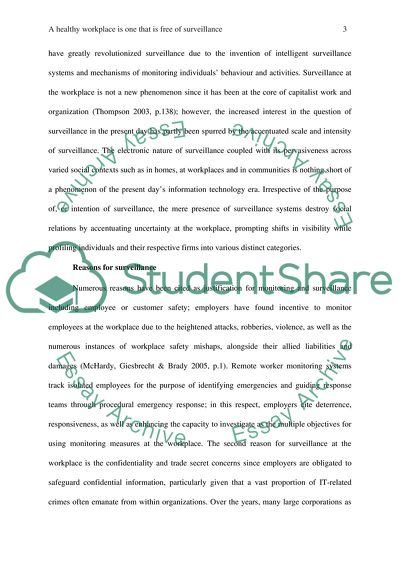Cite this document
(A Healthy Workplace Is One That Is Free of Surveillance Essay Example | Topics and Well Written Essays - 4000 words, n.d.)
A Healthy Workplace Is One That Is Free of Surveillance Essay Example | Topics and Well Written Essays - 4000 words. https://studentshare.org/social-science/1828699-a-healthy-workplace-is-one-what-is-free-of-surveillance-discuss
A Healthy Workplace Is One That Is Free of Surveillance Essay Example | Topics and Well Written Essays - 4000 words. https://studentshare.org/social-science/1828699-a-healthy-workplace-is-one-what-is-free-of-surveillance-discuss
(A Healthy Workplace Is One That Is Free of Surveillance Essay Example | Topics and Well Written Essays - 4000 Words)
A Healthy Workplace Is One That Is Free of Surveillance Essay Example | Topics and Well Written Essays - 4000 Words. https://studentshare.org/social-science/1828699-a-healthy-workplace-is-one-what-is-free-of-surveillance-discuss.
A Healthy Workplace Is One That Is Free of Surveillance Essay Example | Topics and Well Written Essays - 4000 Words. https://studentshare.org/social-science/1828699-a-healthy-workplace-is-one-what-is-free-of-surveillance-discuss.
“A Healthy Workplace Is One That Is Free of Surveillance Essay Example | Topics and Well Written Essays - 4000 Words”. https://studentshare.org/social-science/1828699-a-healthy-workplace-is-one-what-is-free-of-surveillance-discuss.


